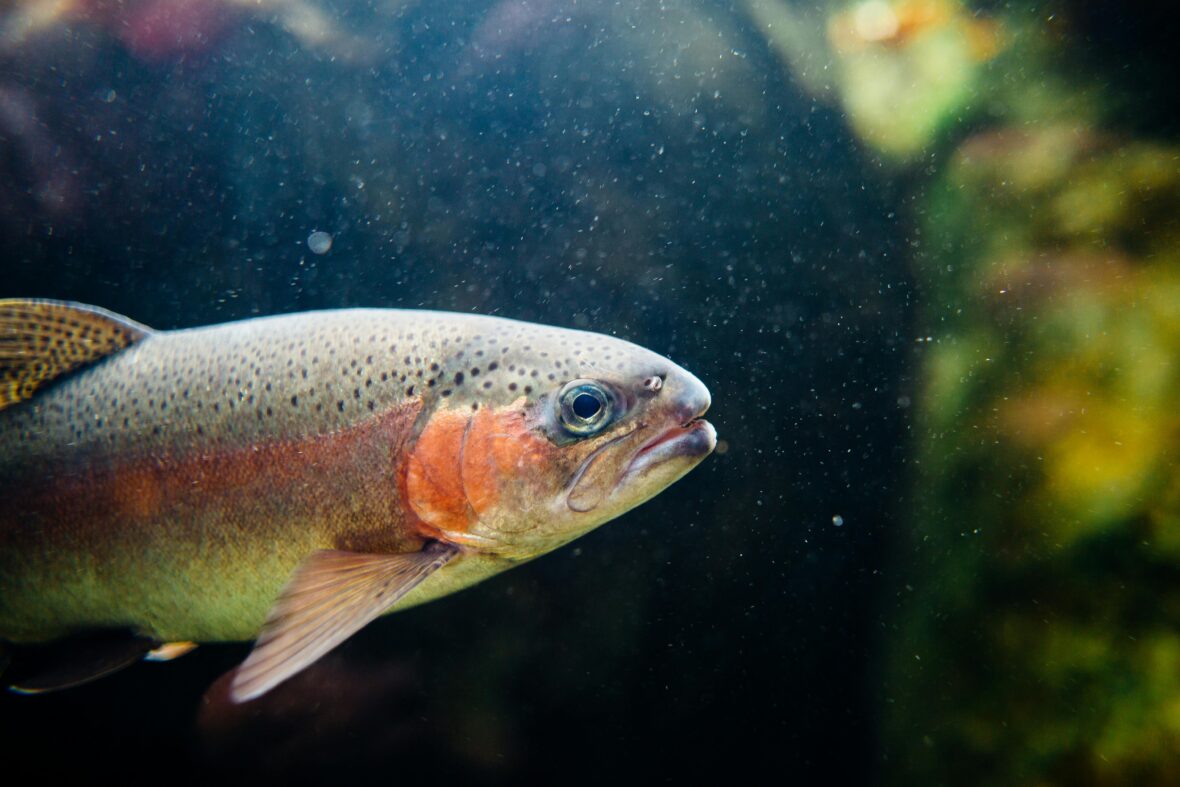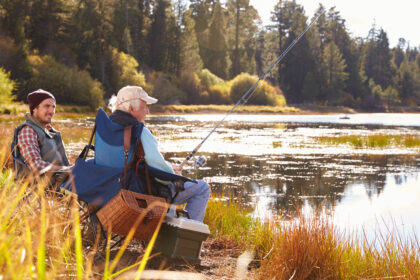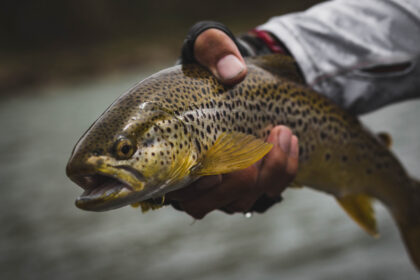When it comes to trout fishing, there are few states that can compare to the bounties of Colorado’s beautiful rivers and lakes. Filled to the brim with amazing hotspots like the Arkansas River and Gore Creek, there’s plenty of opportunity to get out in nature and get lost in the fishing! To maximize your success as you plan your next trip, a great place to start is knowing your prey and the best ways to catch them. That’s where we come in!
In this article, we’re going to look at 6 most common species of trout in Colorado, how you can identify them, and the best places and times to follow for you to find success on your fishing trip and come home with plenty of stories to share
1 - Rainbow Trout in Colorado

The first fish we’re going to look at is the beautiful Rainbow Trout. This is the most common trout you’ll find in Colorado. Introduced to Colorado around the 1880s from California, you can find them all throughout the state.
How to recognize them:
They’re easy to recognize with a few key markings. First is the distinctive pink or red band found down the middle of the trout going horizontally. Other markings include a slightly forked tail and black spots on the top and tail of the Rainbow.
Size:
They’re not known to get very big, but this varies depending on their habitat. Typically, Rainbow Trout range from about 7 to 12 inches in rivers and streams. However, they are known to get up to 23 inches in ideal conditions, such as well-stocked lakes. Their weight ranges from about 1 to 4 pounds in rivers. But they can get up to 8 pounds in ideal conditions.
Habitat:
Rainbow Trout thrive in colder water temperatures. Their ideal temperature range is in the mid-50 degrees. This is when they’re the most active. They can be found consistently in rivers, lakes, and streams.
If you’re looking for a place to start catching trout in Colorado, then looking for Rainbow Trout is the place to start!
2 - Cutthroat Trout in Colorado
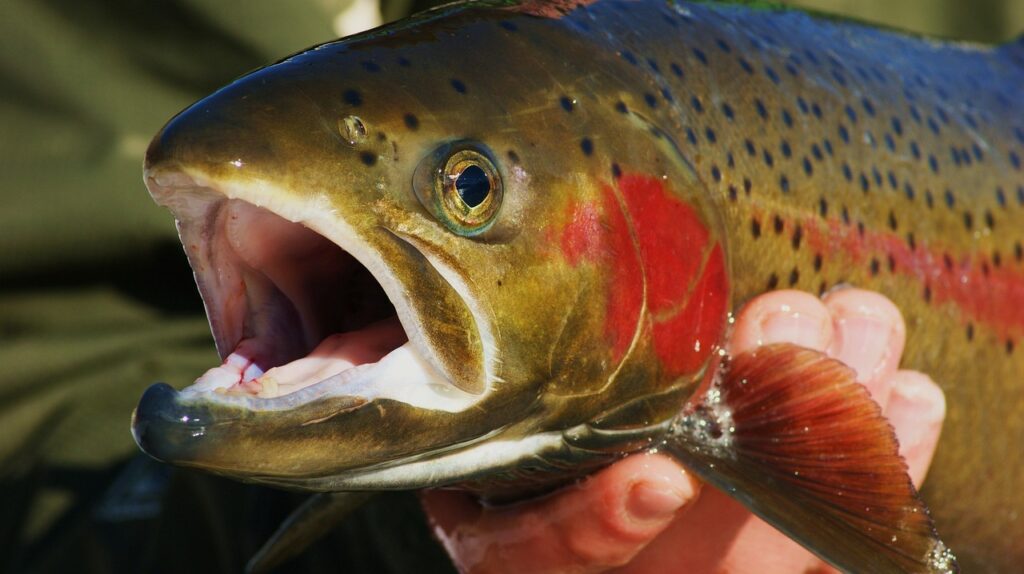
Next up is the Cutthroat Trout. Cutthroat have the prestigious distinction of being the only trout species completely native to Colorado. These fish aren’t as common today. Decades of interbreeding with the non-native Rainbow Trout have led to a decline in true Cutthroat population. They’re more difficult to find now, but still abundant in Colorado’s waters.
Markings:
Cutthroat Trout can be recognized by their namesake. They sport a distinct “cutthroat” slash that can be found towards the bottom of their jaw. It also has small, irregular black spots across the top of its body. A greater number of them are found toward the back of the fish.
Size:
These fish are a bit bigger than Rainbow Trout. They come in at about 8–12 inches and 2–4 pounds in rivers. But they get up to about 20–30 inches and up to 10 pounds in lakes.
Habitat:
Cutthroat can be found throughout Colorado, often in rivers and streams. They’re often in the same habitats as the closely related Rainbow Trout.
While they might be a bit more of a challenge to find, Cutthroat Trout are worth the effort!
3 - Golden Trout in Colorado
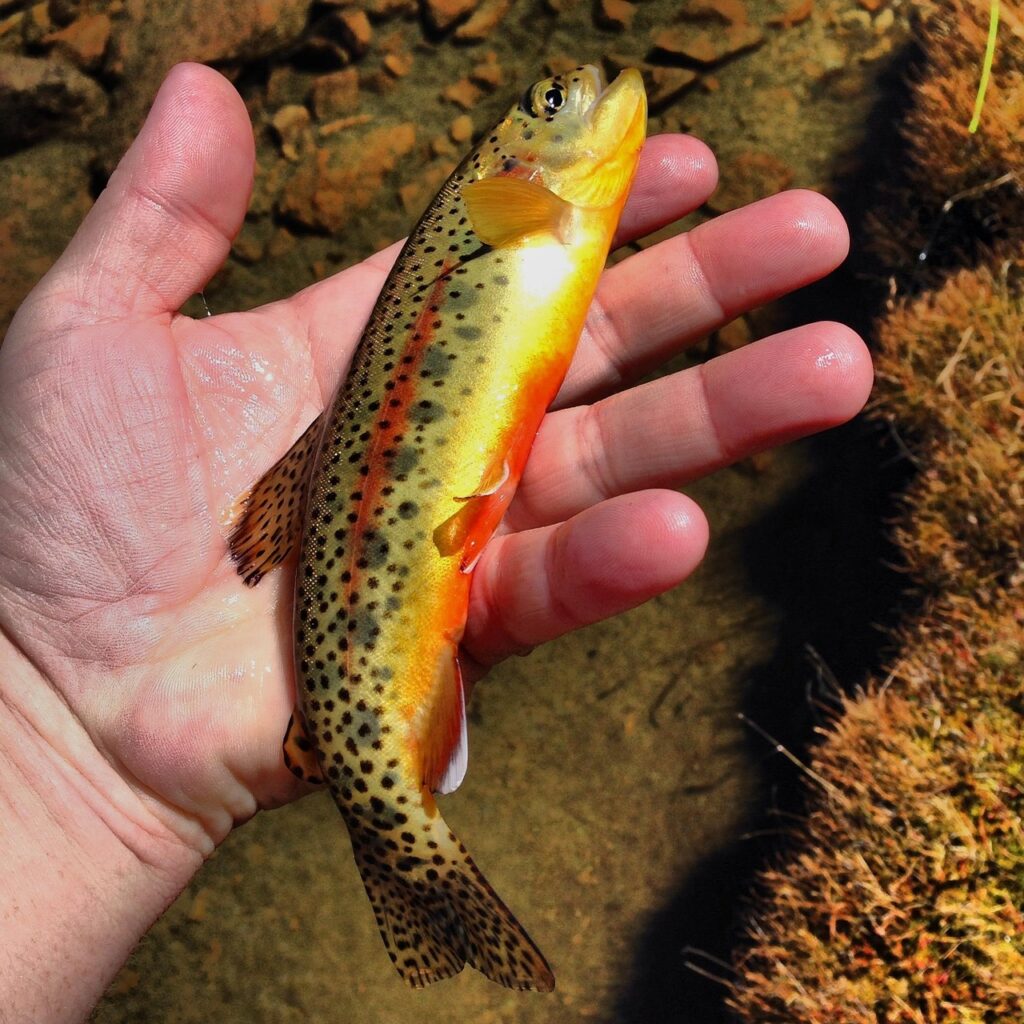
Third on our list is the beautiful and extremely rare Golden Trout. Catching a Golden Trout is often touted as a once-in-a-lifetime achievement for even the most experienced anglers. These fish were introduced from Wyoming in the 1930s.
Markings:
Golden Trout are a subspecies of Rainbow Trout. But have several markings that differentiate them from any other trout. Chief among them is a majestic yellow-golden hue along the lower half of its body. Another marking is round black spots on the upper third of its body. It also has spots on its dorsal fin and tail. And lastly, a dozen blue or purple oval-shaped marks known as Parr Marks. These distinct markings make Golden Trout truly stand out among other trout in Colorado.
Size:
These fish are usually pretty small, rarely getting above 3 pounds. They can grow up to about 20 inches long in ideal conditions. But their usual range is between 6 to 12 inches.
Habitat:
Golden Trout have an extremely limited habitat in Colorado. They only live in a few small, isolated, and often remote mountain lakes. You’ll have to trek high up in the alpines of Colorado, typically above 10,000 feet.
If you’re looking for a story to tell your grandkids about, pursuing the Golden Trout may be for you!
4 - Brook Trout
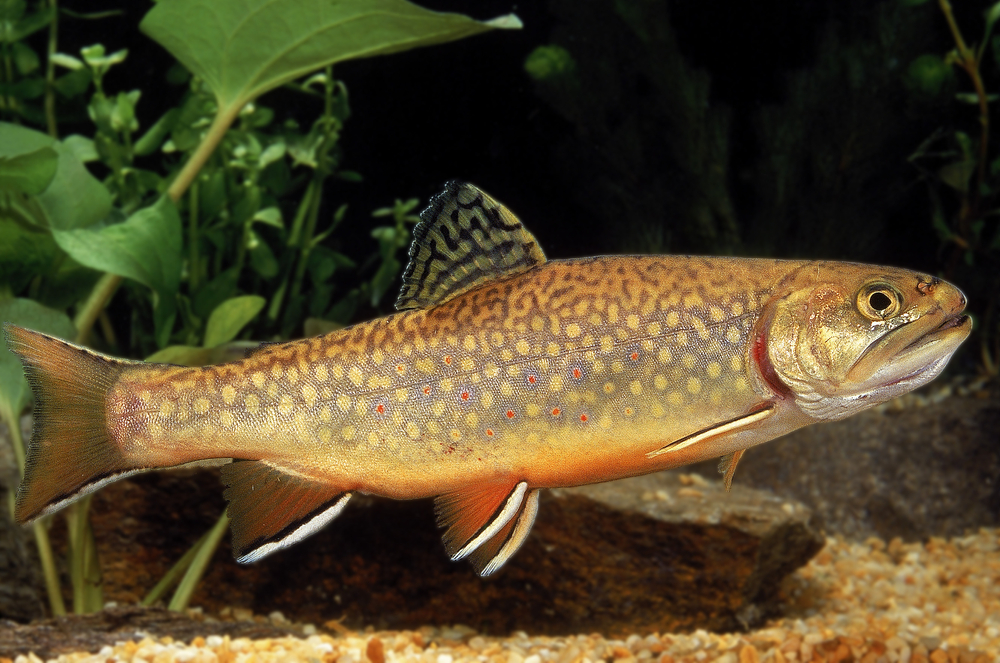
We now come to the Brook Trout, an extremely prolific fish in Colorado as of recent, so much so that special additional limits were created just for them! Brook Trout were first introduced from the Eastern United States to Colorado in about 1872.
Markings:
These fish are recognized by their dark, wavy lines (better known as worm tracks) on their top side and dorsal fin. In addition, these trout are covered in red spots that sport blue halos, a remarkably straight tail, and a white leading edge on its fins.
Size:
These fish range in size from about 4 to 10 inches and 1 to 5 pounds, but they can get up to 18 inches and around 7 pounds in ideal lake conditions.
Habitat:
Brook Trout can be found all over Colorado, but are most prolific in many small streams and even beaver ponds. This fish spawns in the fall and typically prefers slightly colder waters than its Rainbow and Cutthroat counterparts (around 54 degrees).
With plenty of hotspots for this kind of trout in Colorado, Brook Trout are a fantastic option to look at for a successful and enjoyable fishing trip!
5 - Brown Trout in Colorado
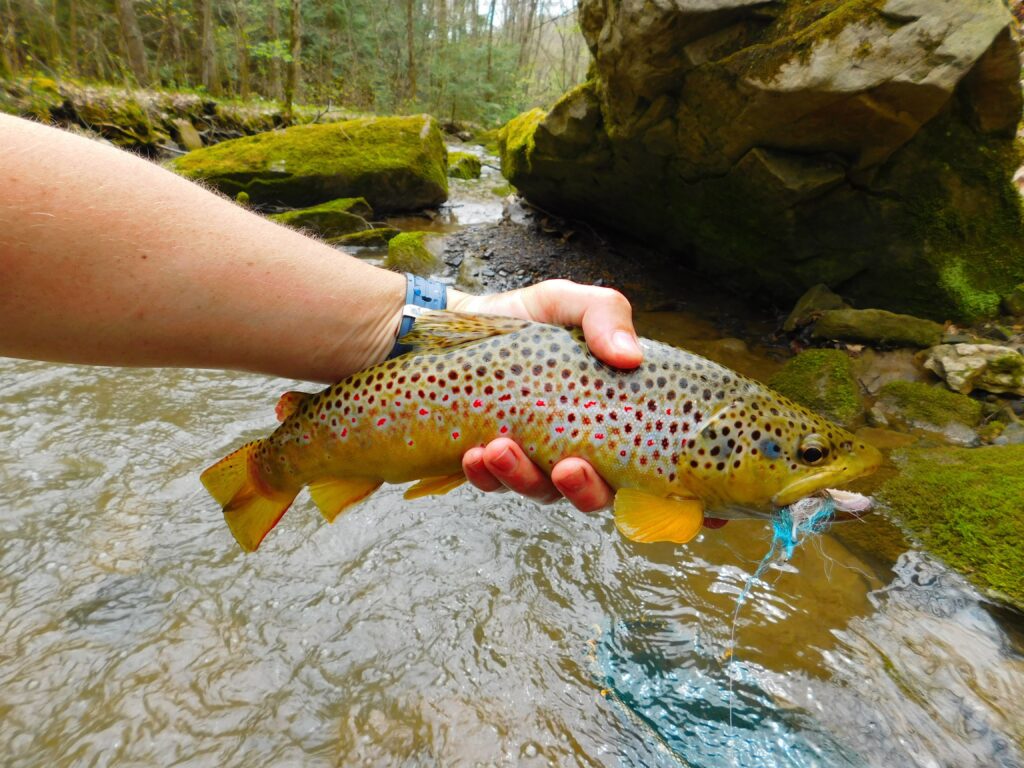
If you’re looking for a challenge to prove your angling abilities, look no further than our next species, the feisty Brown Trout. Introduced from England in the 1890s, these fish are well-known fighters, refusing to give up until all their energy is spent. They’re masters of “dogging it out,” or swimming towards the bottom of the lake with all of their power, making sure that if you’re going to catch them, you’re going to have to earn it.
Markings:
These fish certainly look the part, sporting a prominent hooked jaw and sharp teeth that are easily recognizable. Other features they show include a golden brown color and a tail free from very many spots or markings. Their spots, which they get their name from, are black or brown, sometimes with light halos around them.
Size:
These fish range from about 10–14 inches, with fish over 20 inches being a common occurrence. They typically weigh about 1 to 5 pounds, but these trout can often reach 7 pounds or more.
Habitat:
The best place to find Brown Trout is in most of the large rivers in Colorado, but to find bigger Brown Trout, look to reservoirs like Spinney Mountain. These fish are far more nocturnal than the other species on our list and prefer warmer temperatures, with 60 degrees being their ideal temperature.
If you’re looking for a good fight and hard-won victories, look no further than Colorado’s Brown Trout.
6 - Colorado Lake Trout

Last but certainly not least is the ultimate prize fish, Lake Trout. These fish are also well known by their nickname: Mackinaw. This is the largest of all the trout species, and many angler’s trophy fish have come from the Mackinaw. These fish were introduced in the 1890s to Colorado from the Great Lakes region.
Markings:
These fish can be recognized by their numerous light spots. They also have a white edge that can be found on their fins and a deeply forked tail.
Size:
Lake Trout’s sizes are truly stunning. Their typical weight range is about 2–20 pounds in Colorado, and they’ve been known to get above 50 pounds. In fact, the unofficial world record Lake Trout was even caught in Colorado at Blue Mesa Reservoir, weighing over 70 pounds! These fish can also get above 2 feet in length, and their typical size range is about 19–23 inches.
Habitat:
The habitats of Lake Trout differ greatly from the other trout on our list. These fish seek out the deepest and coldest waters of any trout, and their ideal water temperature is about 50 degrees. These fish are often found in large reservoirs and lakes.
For the trophy fish hunters among you, look to the Mackinaw for your pursuit of glory!
Conclusion: Your Next Adventure in Colorado
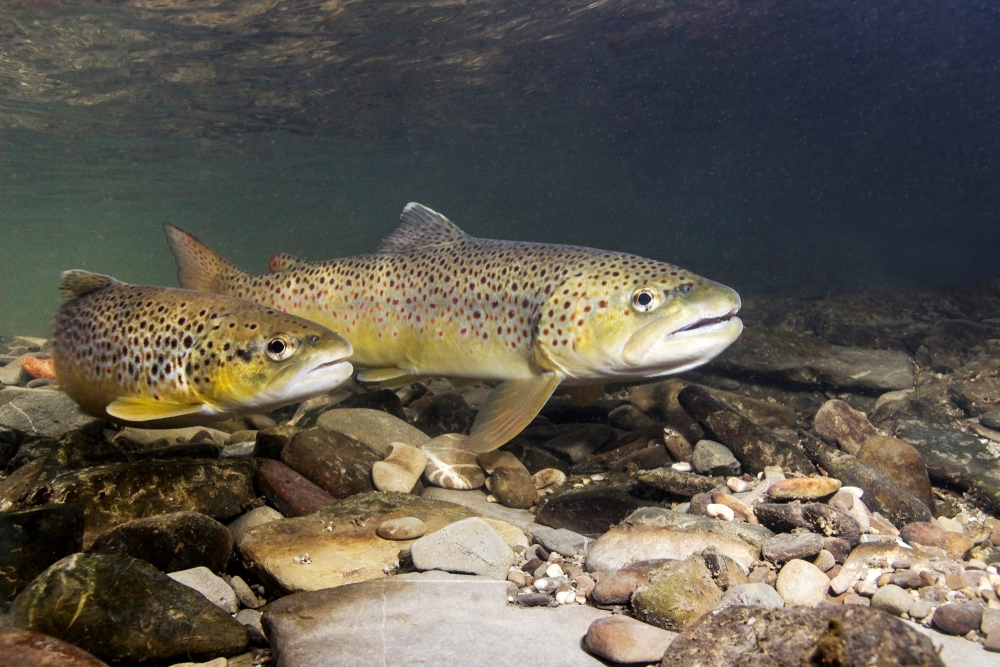
Regardless of if you just picked up a rod for the first time or you’ve been catching fish for decades, Colorado’s cold, trout-filled waters provide plenty of opportunities and variety for your next fishing journey. From the easily accessible Rainbow Trout to the elusive Golden Trout to the prized Mackinaw, each species offers its own challenge to conquer..
Understanding where these trout live, how to identify them, and what to expect in terms of size will greatly increase your chances of success. So grab your tackle box and your fishing license and get ready to write your next trout fishing story among the stunning landscapes of Colorado!

